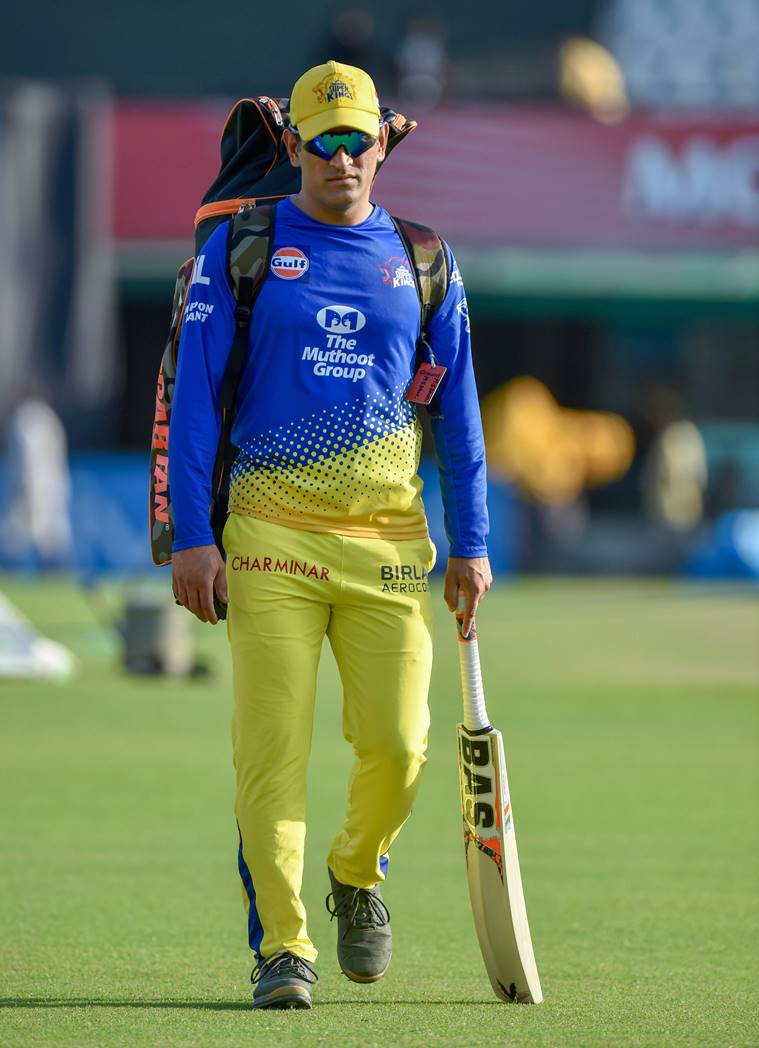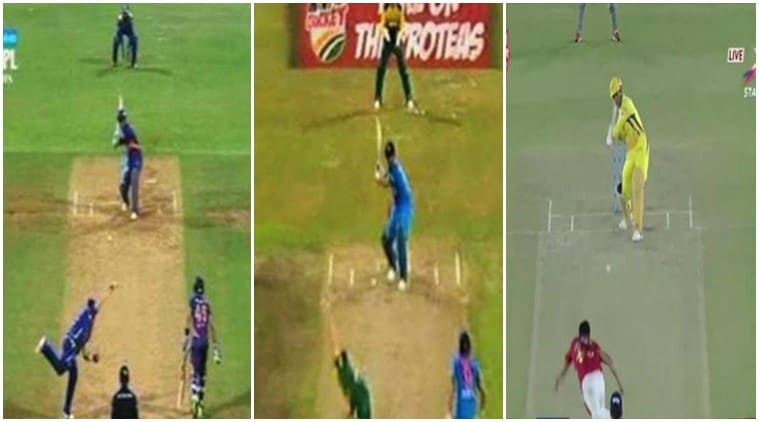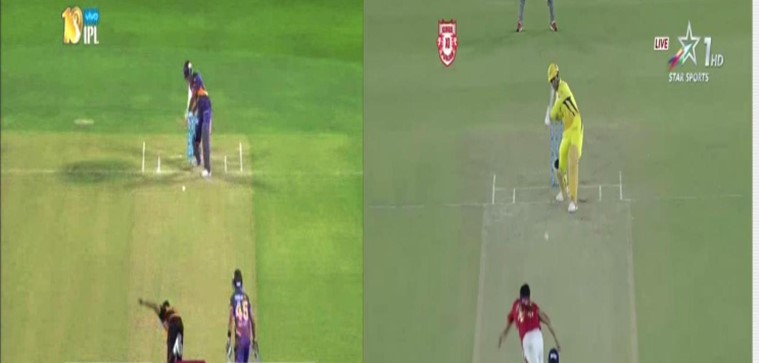 MS Dhoni smashed 44-ball 79* against Kings XI. (BCCI Photo)
MS Dhoni smashed 44-ball 79* against Kings XI. (BCCI Photo)
Sixes upon sixes, matches after matches for weeks can make IPL resemble an incoherent blur, patterns and performances that even a discerning eye can miss. Questions are left hanging in the air: like, was MS Dhoni’s whirlwhind knock against KXIP a norm or exception? Prasanna Agoram, Proteas’ performance analyst, comes on board The Indian Express and unveils the method behind the IPL madness. Here’s the first of his weekly dispatches.
Does his whirlwind 44-ball 79* in the IPL game against Kings XI Punjab last Sunday suggest Mahendra Singh Dhoni has regained his attacking avatar? Or was it just a flash in the pan? Is there a pattern that we can glean from Dhoni in the last several months to say anything definite? Indian cricket has sweated a lot on Dhoni’s batting. Even his hardcore fans had begun to feel that age has caught up with him, and that his attacking days are a thing of the past. But it’s not true: There have indeed been several batsmen before him who have lost their hand-eye coordination when they got older but Dhoni is still supremely fit, his reflexes sharper than ever behind the stumps. What has ailed him, then?
In one word: the balance at the crease. He is someone who has not fussed about his technique much that people have confused it with a lack of technique. Technique doesn’t always be seen in purist’s term; rather it’s what makes a batsman tick. For example, Virender Sehwag’s technique was not to get his footwork impede him; he liked to stay beside the line. Combined with extraordinary hand-eye coordination, it allowed him to destruct bowling attacks. Similarly, Dhoni had his own home-grown technique. The definition of technique is just getting the blue print success of a player at his best no matter. Everyone has their own method of batting that suits them.
In IPL 2017, he worked real hard on his stability and down swing in every net session, after carefully watching the video footage. Now, all of a sudden, he is back to the old problem that had subconsciously crept in. An exaggerated back-foot trigger movement which impeded his balance, bat-swing.
Balance is key
The most important factor in Dhoni’s technique is the equilibrium he has at the crease. Now, balance is easy term to understand but it’s difficult to achieve. It’s like that cliché: staying still. Nearly every good batsman talks about it, but only a few achieve it.
 MS Dhoni failed to win the match for CSK. (PTI Photo)
MS Dhoni failed to win the match for CSK. (PTI Photo)
Some kind of trigger movement kicks in as the bowler runs in, and it’s not that those trigger or set-up movements are harmful, but it depends on what the batsmen is about to do. Viv Richards would strive to move towards the ball first before he getting back and across if the ball was short. Michael Slater would go back and across from the start. That suited their respective styles of play. Both batsmen would keep their head still as much as possible, which helped them to not only see the ball but respond it as quickly as possible.
With Dhoni, he is at best when there is minimal movement as possible. It sets him up for all his actions after the ball releases: the upward batswing, the angle at which the bat is picked up, and the angle at which it comes down. Then the downward swing of the bat, and importantly, the hipswing that allows him to get the bat down and through the line of the ball.
Even in his good days, we have seen him in slight trouble when say the ball reverses a bit (in Tests more often than not). He would start dragging himself either towards the ball or across the crease, and that would end up causing more troubles for him. Clearly, he is at his best when he doesn’t do such movements (see images on the right).
In the last year during his down days, as seen in South Africa, he had started to fiddle around with his back-foot movement. And that locked him up, as we have seen in the accompanying pictures. In his better days, he would stand still, his bat held in a relaxed manner, even as the bowler loads up and releases the ball. With his front foot kept a touch open, the bat would swing down unhindered.
All that changed of late. For Dhoni to be still at the crease, it comes down to how relaxed and how he shared his weight on both feet. The Dhoni of old would stand, with his knees slightly bent, weight equally balanced, and head in line with the front toe. But when things started to go wrong, video analysis showed that he didn’t have the optimal balance as either the front or the back knee was more bent than the other: a small thing like that acts as a trigger that pushes every other stuff that follows in his batting technique.
For example, it initially started to affect his toe alignment, which meant his hands went lower to achieve the balance, and he lost the all-important stability of the base in the process. It then in turn started to affect his bat swing: it started to come from an wide angle, and forced to a slightly open-chested action. With his right hand the dominant for a bottom-handed player like him, he started to try generate all his power through the hands, but without the ideal hip-rotation, he was unable to get much power or elevation.
Why KXIP match was different
Perhaps it was the back problem that he experienced in the last game that actually ended up being a blessing in disguise, forcing him to stand in an upright position, and helping him in achieving a solid base. Time will tell us whether he can reproduce all the successful elements from the previous game. If he does, the bowlers from opposing teams, better watch out!
Trigger and the tangle
 MS Dhoni in IPL 2017 (L), during South Africa tour (C) and IPL 2018.
MS Dhoni in IPL 2017 (L), during South Africa tour (C) and IPL 2018.
Let’s start with his stance. He would stand still, and hasn’t moved an inch even as the bowler gets into the loading position prior to release of the ball.
In 2018, as recent as the South Africa series, he had deviated from that, making a big back-foot trigger movement with his right foot ending in line of the off stump. It affects his back lift – the bat starts pointing towards gully. Both front and back foot are parallel to each other, and all it takes is less than a second for the ball to reach him. Hence, length deliveries angling in will be always a problem to get some elevation going. H is body gets sort of locked as he doesn’t get much time to open his body. The back foot collapses a bit, and with the front foot a touch closed, it restricts the hip rotation, which eventually curbs his strokeplay.
Down on the Downswing
 MS Dhoni during IPL 2017 (L), SA Tour (C) and IPL 2018.
MS Dhoni during IPL 2017 (L), SA Tour (C) and IPL 2018.
Then let’s see what happens when the bowler releases the ball. In his good times, as seen on the two extreme pics on either side. The front foot is open, which makes it easier to clear the front leg and allow the bat to flow down smoothly to get elevation on the shot. The front foot is opened enough for a perfect hip rotation to generate power.
But his problems in the recent times is captured in the middle frame: The down swing comes from outside the eyeline, too far away from the body that he actually has to drag the bat in, and he ends up a touch open-chested, the hip-rotation isn’t smooth, and he gets locked.
Straight and still
 MS Dhoni during IPL 2017 (L) and during IPL 2018.
MS Dhoni during IPL 2017 (L) and during IPL 2018.
In some ways, the absence of helicopter shot in the last few months was as good as an indication about where things went wrong for him. It made its return in the last game.
Let’s take a close look. As it is, in the last game, he stood a bit upright, and the batswing came down in straight lines. The front shoulder remained high, due to his upright stance, and didn’t drop down at all. The bat came down in straight line, hip rotated smoothly, the follow-through of the bat was full, and despite the full length of the ball, the bottom hand kicked in enough to generate the power. There was no doubt about where the ball was heading: six over wide long-on.